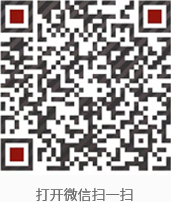How accurate is dual-frequency GPS?
Dual-frequency enhancement of positioning is mainly in two aspects.
1. High code rate can effectively improve the accuracy.
First of all, let's talk about the L1 situation, L1 is the United States has long supported the satellite frequency. It is also the first generation of frequencies open to civilian use. In the same era, there is also L2 frequency, only L2 is military, L1 and L2 in addition to the random code and carrier frequency is different, their code rate is also different, the code rate of L1 is low, each code occupies a time of about ten minus six times the square second. Of course, these signals travel at the speed of light, which is three times the eighth power of ten, so the time multiplied by the speed of light is probably close to 300 m. The code rate of L2 is ten times that of L1, and each code occupies ten times fewer time periods than L1, which becomes ten times less than the negative seventh power of ten. Multiplied by the speed of light, it is about 30 meters. Of course, this is the resolution of one satellite, if multiple satellites are used at the same time, and the irradiation range of many satellites is taken as the intersection, then the accuracy of L1 will be far less than 300 meters. L2 is more accurate.
L5 and L2 use the same code rate, but open to civilian use. At this point, you should be able to understand the first advantage of L5.
Further, what are the benefits of this resolution for urban environments. There are a lot of tall buildings in the city, and the satellite signals reflect off of these buildings and become very cluttered, intertwining with the correct direct signals in what we call multipath (many paths). Keep in mind that these signals travel at the speed of light, and even a small signal delay caused by a small reflection, if multiplied with the speed of light gives a large distance. And these reflected signals are sources of error. Think about it again, with all the buildings around you, the satellite signal is reflected more than once. So is there a way to deal with these reflected signals? In fact, there are, the algorithm engine will be optimized to try to eliminate these errors, the most commonly used is to select the point with the highest spectral density, but due to the multipath effect, the point with the highest spectral density is probably not the signal directly.
L5 signals have a high bit rate and the spectral density is more likely to be concentrated. Although L5 also reflects, the probability that the reflected false signal will be superimposed on the correct direct signal to form a new peak in spectral density is lower. This also makes it easier for the computational engine to find direct satellite signals. Of course, there is one situation that is not resolved, that is, the L5 signal is not direct, if the phone can only see the reflected signal is completely no direct signal that can not be done.
So you may ask, L5 high bit rate is so good, why not just use L5 ah? Because the low bit rate of L1 is easier to be captured. We want precision and at the same time do not sacrifice positioning time ah. So L1 is also called rough capture code, after the signal is captured, L5 can be involved in the calculation. 2.
2. Two frequencies can eliminate ionospheric errors.
If there is only L1 signal, then the cell phone will receive it as if L1 is coming directly from the ionosphere, while in fact L1 may already be in the atmosphere. In fact, L1 may have been refracted in the atmosphere, and the refraction will lead to a certain delay, remember the speed of light propagation. This delay in the atmosphere can lead to significant errors. Many scientists have determined that atmospheric errors account for 60% of all errors.
Anyone who has taken a college physics class should know this. Signals of different frequencies have different refractive indices when traveling through the same medium; L5 is naturally of a different frequency than L1. The satellite transmits signals at both frequencies at the same time, and the cell phone receives them at different times, which gives the cell phone a chance to project the atmospheric error, and then to eliminate it.
That's why dual-frequency GPS will be the trend of the future, and it can also effectively improve the positioning experience. However, I would like to say that dual-band GPS is not a revolutionary change although it is a great improvement.













